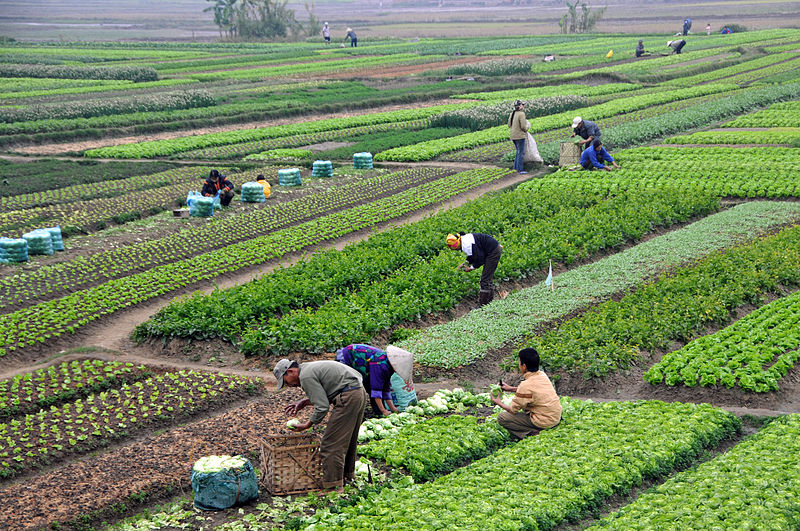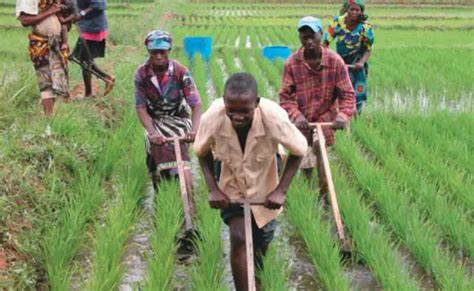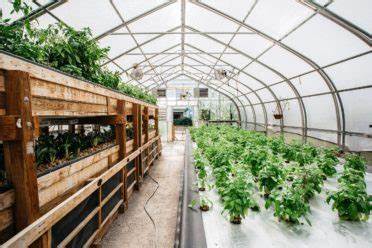
Vertical Farms in Developing Nations: Revolutionizing Agriculture for Food Security and Sustainability
Introduction
Vertical farming is a concept that has gained significant attention in recent years, especially in the context of developing nations. As urbanization increases and arable land becomes scarce, the need for alternative methods of food production becomes essential. This article explores the relevance and importance of vertical farms in addressing food security and sustainability issues in developing nations.
Historical Background
The origins of vertical farming can be traced back to the early 20th century, with the works of pioneers such as Gilbert Ellis Bailey. However, it was not until the 21st century that vertical farming gained momentum and saw significant advancements. Notable milestones in the field include the introduction of hydroponics and aeroponics, as well as the development of vertical farming systems that optimize space and resource utilization.
Key Concepts and Definitions
Vertical farming refers to the practice of cultivating crops in vertically stacked layers, typically in urban or indoor environments. Key components of vertical farming include controlled environment agriculture (CEA), which involves optimizing temperature, humidity, and light conditions for plant growth. Urban agriculture encompasses various methods of food production within cities and includes vertical farming as a key component.

Main Discussion Points
Benefits of vertical farms in developing nations are numerous. Firstly, vertical farming allows for increased crop yield and land efficiency. By utilizing vertical space, farmers can grow more crops in a smaller area, thereby maximizing food production. Additionally, vertical farming reduces water usage and environmental impact by employing techniques such as hydroponics, which require significantly less water compared to traditional farming methods. Lastly, vertical farms enhance food security and self-sufficiency, as they can be established in urban areas, ensuring a local and reliable food supply.
Economic and social impacts of vertical farming are also significant. Vertical farming creates job opportunities and contributes to economic development in developing nations. By investing in vertical farming infrastructure and technology, communities can benefit from increased employment and income opportunities. Furthermore, vertical farming improves access to fresh and nutritious food, especially in urban areas where traditional agriculture may be limited. By providing locally grown produce, vertical farms empower communities to make healthier food choices and reduce dependence on imported goods. Ultimately, this can help reduce poverty and improve overall well-being.
Technological advancements and innovations in vertical farming have played a crucial role in its development. Vertical farming systems and infrastructure have become more sophisticated, allowing for efficient use of space, light, and resources. Automation and artificial intelligence are also being integrated into vertical farming, enabling precise control over environmental conditions and optimizing plant growth. Moreover, vertical farms are increasingly adopting renewable energy sources, further reducing their environmental impact and contributing to sustainable agriculture practices.
Case Studies or Examples
Singrow Singapore is a successful vertical farm in Singapore that addresses the challenge of land scarcity. By utilizing vertical space, Singrow Singapore has been able to maximize crop production, providing fresh produce to the local community. Ouroboros Farms, an aquaponic vertical farm in California, demonstrates the community impact of vertical farming. By combining aquaculture with hydroponics, this farm not only produces food but also serves as an educational and recreational space for the community. Sky Greens in Singapore is another notable example of vertical farming for urban food production, utilizing vertical towers to grow various vegetables.

Current Trends or Developments
Recent research findings and advancements in vertical farming technology have expanded its potential in developing nations. Innovations such as vertical farming in shipping containers and vertical gardens on building facades are gaining traction. Additionally, developing nations are increasingly adopting vertical farming as a means to improve food security and sustainability. Governments and organizations are investing in research and infrastructure to promote vertical farming practices, further driving its adoption.
Challenges or Controversies
Despite its numerous benefits, vertical farming in developing nations faces several challenges. The high initial investment and operational costs associated with setting up vertical farms can be prohibitive, especially for resource-constrained regions. Additionally, technological limitations and scalability issues can hinder the widespread adoption of vertical farming. Furthermore, regulatory and policy barriers may pose challenges to the establishment and operation of vertical farms in some regions. Differing viewpoints and debates surrounding vertical farming also exist, with some critics raising concerns about its overall environmental impact and long-term viability.
Future Outlook
Vertical farming has the potential to revolutionize agriculture in developing nations. As technology continues to advance and costs decrease, vertical farming is poised to play a significant role in achieving sustainable agriculture goals. By providing an efficient and sustainable method of food production, vertical farms can contribute to improved food security, reduced environmental impact, and empowered local communities.

Conclusion
Vertical farms in developing nations hold immense promise in addressing food security and sustainability challenges. Through increased crop yield, reduced environmental impact, and improved access to fresh produce, vertical farming can transform agriculture in urban areas. By investing in research, technology, and supportive policies, developing nations can harness the potential of vertical farming to create a more sustainable and resilient food system.
References
Despommier, D. (2010). The vertical farm: feeding the world in the 21st century. Picador.
Godfray, H. C., Beddington, J. R., Crute, I. R., Haddad, L., Lawrence, D., Muir, J. F., … & Toulmin, C. (2010). Food security: the challenge of feeding 9 billion people. science, 327(5967), 812-818.
Sanyal, S. K., & Valenzuela, H. (2020). Vertical farming: a sustainable solution to food security and urbanization. Journal of Ecology and Environmental Sciences, 5(2), 82-89.




